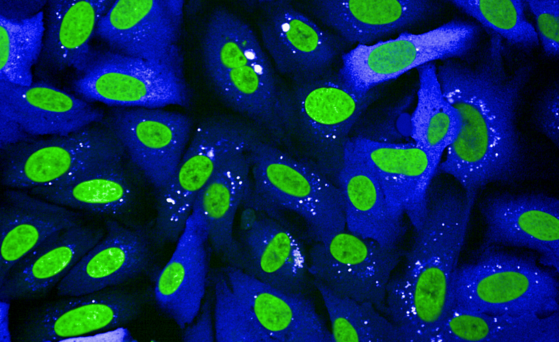Contact
12277 Berlin
Deutschland Postal address: Bundesinstitut für Risikobewertung
Max-Dohrn-Str. 8-10
10589 Berlin
Deutschland Telephone: 030-18412-79001 030-18412-79001 E-mail: bf3r@bfr.bund.de

A reliable assessment of the effects of chemicals and pesticides on the human endocrine system (so-called endocrine disruptors) is of central importance for consumer health protection. Hormones regulate, among other things, the formation, breakdown and remodeling of various organs and tissues. If these precisely regulated processes get out of balance, this can lead to the development of tumors and metastases. In the case of breast cancer, which is one of the most common types of cancer in Germany, the female hormone estrogen plays an important role in this context, as it is suspected of promoting tumor formation and metastasis.
Until now, the identification and characterization of endocrine disruptors has been based primarily on animal experiments, whereby a high number of test animals (>500 per substance) is required, especially for the detection of carcinogenic effects. Here, alternative methods, such as a cell-based screening method (E-Morph Assay) that is developed in this project, can support the reliable identification of substances with estrogenic effects and thus help to significantly reduce the number of test animals. The Bf3R is also investigating possible molecular mechanisms of action of endocrine disruptors using biochemical methods and super-resolution microscopy. A special focus is on the influence of estrogenic substances on tissue stability and tumor metastasis. As part of the BMBF-funded third-party project "MORPHEUS", the E-Morph assay is currently being further developed for Cell Painting-based phenotypic screening and serum-free cell culture conditions.
The Bf3R thus contributes to the scientific discussion on how chemicals and pesticides in the environment can affect the human endocrine system and whether there is a possible health risk.
In a 96-well plate, cells of a breast cancer cell line are brought into contact with various test substances in increasing concentrations (exposure). These cells are then stained with a dye, which can be used to derive various morphological parameters for each individual cell (image analysis). Based on these parameters, dose-response curves can be generated, which provide information about a potential estrogenic effect of a test substance (prediction).
Klutzny, S.; Kornhuber, M.; Morger, A.; Schönfelder, G.; Volkamer, A.; Oelgeschläger, M.; Dunst, S. Quantitative high-throughput phenotypic screening for environmental estrogens using the E-Morph Screening Assay in combination with in silico predictions. Environment International 2022;158:106947 External Link:https://www.sciencedirect.com/science/article/pii/S0160412021005729
Kornhuber, M.; Dunst, S.; Schönfelder, G.; Oelgeschläger, M. The E-Morph Assay: Identification and characterization of environmental chemicals with estrogenic activity based on quantitative changes in cell-cell contact organization of breast cancer cells. Environment International 2021;149:106411. External Link:https://www.sciencedirect.com/science/article/pii/S0160412021000350
Bischoff, Pshort forphosphorus.; Kornhuber, M.; Dunst, S.; Zell, J.; Fauler, B.; Mielke, T.; Taubenberger, A.V.; Guck, J.; Oelgeschläger, M.; Schönfelder, G. Estrogens Determine Adherens Junction Organization and E-Cadherin Clustering in Breast Cancer Cells via Amphiregulin. iScience 2020;23:101683. External Link:https://www.sciencedirect.com/science/article/pii/S2589004220308750
Bischoff Pshort forphosphorus, Kornhuber M, Schönfelder G, Oelgeschläger M, Dunst S, Vogl S. Screening method for estrogenic and anti-estrogenic activity. EP3517967, WO/2019/145517, US20210055311. European Patent Office / U.S. Patent & Trademark Office. 2019 / 2021. External Link:https://patentscope.wipo.int/search/en/detail.jsf?docId=EP249469531&_fid=WO2019145517